

culebra22
-
Content count
125 -
Joined
-
Last visited
-
Days Won
2
Posts posted by culebra22
-
-
-
did ya know tonic water glows in the dark after/when exposed to UV light?:
http://z.about.com/d/chemistry/1/0/D/f/glowingtonicwater.jpg
There are two reasons for the name 'Indian tonic water'.
1. The Quechua Indians of Peru mixed ground cinchona bark with sweetened water to stop shivering.
2.The British in colonial India mixed medicinal quinine tonic from their cinchona plantations with gin. The product was then called Indian tonic water.
good link:
http://sres-associated.anu.edu.au/fpt/nwfp/quinine/Quinine.html
-
-
-
Sounds interesting.
Yes, photo please!
-
Regrafted the loph to a pedro with success, now it has started to develop a bit of black rot under the graft and it aint looking good!
I wonder if a bit of bug shit or something was on the cut end of the graft, maybe this has caused the rot? It looked fine at the time of grafting. Hopefully I have a good enough union with the graft to grow it a little to regraft it.
The bug burrowed into the peres and was eating the vascular system and leaving its bug shit in replacement for it! Saved a small bit of the peres by cutting out where the bug was, down to where the vascular system wasnt damaged.
The black rot doesn't sound good mate.
Yeah I would think that because the bugs mouthparts, shit etc. are not sterile (like contaminated) it would make what remains of the loph very vulnerable to rot.
Fingers crossed it makes it!
-
I think its awesome, albeit in a somewhat unnerving way.
I like this quote:
"We are so used to this world that we cannot see its perversion anymore.
Ofcourse this will seem perverted..."
I'm undecided about the ethics associated with this sort of creation, which as they admit serves no particular purpose other than to show what is possible.
wait a second what the hell:
The work has been exhibited in the UK, and the remaining cactis are currently being considered for further exhibitions or possible transplantations into the wild?
-
http://en.wikipedia.org/wiki/Ichthyoallyeinotoxism
http://www.erowid.org/animals/fish/fish_info1.shtml
'Even a variety of fish produces hallucinations. Roughly (1960)
described the dream fish present near Norfolk island. The inhabitants
stated consuming this fish would produce nightmares. In order to test
this claim, Joe Roberts, National Geographic photographer, consumed
some of the fish, broiled. The next morning he reported "It was pure
science fiction." He saw a new kind of car, pictures of monuments to
mark man's first trip into space. The fish is Kyphosus fuscus,
closely related to the silver drummer caught off New South Wales.
The author, Roughly, also tried the fish and had weird dreams.'
Perhaps some kind of psychoactive algae in their diet??
Maybe if the seaweed responsible could be identified then it could be investigated. Or else the active constituent is found in the algae/weed in tiny quantities and gradually bioaccumulates in the fishes bodies over time?
Interesting that mullet can also produce these sort of effects, accordingly many species are partially vegetarian.
Never encountered any active mullet myself.
I think luderick and the related zebra fish- also vegetarians- should also be investigated.
-
that certainly is some tiny amount
hehe yeah.
00.0002% - I don't think the authorities are going to be overly concerned about this one eh.
probably need several thousand kilograms of the stuff.
by comparison one tested Loph williamsii recorded 2.74%.
-
culebra22: the link explains whats legal in what states and what isn't, (again, it is pinned at the top of the cactus sub-forum by the moderator teonanacatl). As for my statement, "I don't even know what pelecyphora or gymnocalycium are dude so I wouldn't worry too much" I meant to convey that I wouldn't know one if I saw one - and I love my loph's and trich's - so I doubt it would be a problem growing them in your front garden, say as opposed to a ganga plant, which everybody knows by looks.
I'm not having a go at you if that's what you though?
Pereskiopsis don't have mescaline in them do they? Man if they did then it would be party time as those spiney buggers grow like nothing else!
peace
Nah ya good mate.
I love my loph's and trich's - so I doubt it would be a problem growing them in your front garden, say as opposed to a ganga plant, which everybody knows by looks.
Yeah fair point, granted given the thuggish mentality of your average cop I think it'd be an achievement if they managed to ID a loph or Trich in the first place, let alone these lesser-known cacti.
Pereskiopsis don't have mescaline in them do they?
Yeah, well apparently they do, in tiny amounts.
http://www.napralert.org/NapralertReport_Mescalineoccurrences.pdf
^It's even in two acacias and some Opuntia species.
-
I don't even know what pelecyphora or gymnocalycium are dude so I wouldn't worry too much... but here the thread outlining the legalities.. it's pinned at the top of the cacti sub forum:
http://www.shaman-australis.com/forum/index.php?showtopic=17519
always worth staying up to date
Not sure which dude you are referring to here, but perhaps if what you mention is accurate ~ i.e. a ban encompassing cultivation of 'all mescaline-bearing cacti'...
Then this could possibly be of concern to growers in this state who happen to have these plants in their collections?
I am not in that state and so am not aware of the technicalities or enforcement of this particular legislation.
-
ROFL check out the link again.
33 bids ~ $36.
And...
ADDIT: Ebay in their In(finite) wisdom have stopped me answering questions and publishing them. If anyone knows how to use the internerd to set up a board or something maybe I can still help you with the metrosexual problems in your life...
-
They are unfortunately illegal in QLD. So are any of the other mescaline bearing cacti.
I was aware they are illegal in Queensland, but
I thought it was only SA that had this absurb law; 'ban of all mescaline-bearing cacti'.
So this legislation effectively renders Trichocereus, Pelecyphora, many Gymnocalycium, pereskiopsis etc illegal also.
even to grow.
-
EPIC!
a bloody legend selling this bloody ripper, an utter "icn" of Australiana!
TFS.
Pickup only from Carramar and preferably by ute with dog.
32 bids, $32.
-
Regrafted with success, the bug ate right into the core of the peres and destroyed it. Lucky the loph has been saved!
CONGRATS!
Always good to hear a happy ending mate.
What stock did you regraft it to?
Was the bug still inside when you cut it? Or had it already left by then?
-
Maybe the saguaros are Tricho tersheckii or pasacana?
-
What a wonderful garden! TFS!
Dd you take any photos of the brugs by any chance?
buddhists hey ! , so thats how they get their visions of enlightenment ! Hah !
My thoughts exactly.
-
What the hell is with restricting the number of Astrophytums, Mamillaria grahamii, Turbinicarpus', Pelecyphora aselliformis and others??!Yeah I thought this was rather odd too.
I'm guessing this legislation is really going to decimate some cactus collections over there, especially those specialising in said genera.
Thinking about it perhaps now that youths there looking for cheap thrills will be attracted to these (-rather obscure cacti from a contemporary ethnobotanical viewpoint-) and see them as being drugs rather than as plants, and so they will more than likely ingest them; perform bioassays on them- and so inadvertently raise the profile of these plants. Then Maybe Teotz would be interested in their findings pertaining to the psychoactivity of these "Lost Peyotes"!
Speak Czech Teotz? hehe. For example, I imagine the number of Astrophytums being ingested there is going to increase substantially in the near future...
-
Thanks for the coumarin link apothecary.
Brunfelsia uniflorus is listed as containing scopoletin, apparently psychoactive according to wiki and is also found in B.grandiflora. Also found reference to it being in B.hopeana. I assume it's probably in many if not all.
Accordingly supposed to be prevalent in the Solanaceae and is found in many other genera as the posted link shows.
Scopoletin also has some purported medicinal properties and health benefits, as evidenced in the SAB link and the below:
http://www.phytochemicals.info/phytochemicals/scopoletin.php
http://www.zhion.com/phytonutrients/Scopoletin.html
hey apothecary do you think coumarins could be responsible for the depressant qualities-- very deep sleep I experienced? or more likely the tropanes?
I think I found your reference to the cytotoxicity of B.latifolia:
http://www.banglajol.info/index.php/JPharma/article/view/348/343
Also has stated antimicrobial activity.
A list of Brunfelsia species can be found here, useful for identification and future reference:
http://davesgarden.com/guides/pf/b/Solanaceae/Brunfelsia/none/cultivar/0/
RE: Justicia pectoralis: Interesting plant, reportedly rich in coumarins.
I don't have and am not familiar with this one though,
would be interested in hearing of tantra's research.
Also completely random but I was watering my plants today and thought; has anyone bioassayed any Iochroma species?
rationale: a lesser-known and under-studied genus in the Solanaceae with some historical uses by shamans; maybe worthy of investigation?
IIRC Iochromas contain 150 different alkaloids(!).
Have seedlings and access to material of deep violet and reddish purple forms of I.cyaneum. Have also seen a reddish-orange fl one which I hope to be the revered I.fuchsioides species.
-
More Brunfelsia spp. information compilation archive from UTFSE's:
Old SAB thread on Brunfelsia
interestingly a poster in this reports "wake up next morning feeling refreshed" in agreement with my report.
however 4 litres (!) of boiled leaf infusion is used in this case and it results in a "drowsy drunken state".
another SAB thread
The Solanaceae as Drugs and Medicine
^^mentions tingling sensation.
I like the looks of the plant anyhow, the flowers are purtty and the scent wonderful.
-
I have heard Brunfelsia may be one of the most safe of the Baneful plants.Yes, I have heard this too.
Fortunately I haven't noticed any adverse affects yet.
Mind you 'most safe' in this statement is comparative so a lil respect/caution and care should be advised. also note the 'may'.
Accordingly they do not seem to be anything like Brugmansia/Datura, and many experimenters report subtle and mild experiences.
Here is a thread on Australian Ethnobotany forum about this topic:
seems to have been explored a little bit... be sure to check out the second page, one correspondent reports tripping on it, interestingly with a smaller quantity than I used, although the species implemented in that case is unspecified.
-
Brunfelsia is a genus in the Solanaceae.
Attractive shrubs, the common name is Yesterday, Today and Tomorrow, a reference to the fact that the flowers open purple and turn white the next day.
Some species have historical uses by shamans in South America both medicinal and psychoactive; B.grandiflora is used as an additive to ayahuasca.
Fairly common in gardens in Australia, sometimes used as a scented accent hedge or feature plants.
The species used here is possibly B.latifolia, but I am not sure on the identification with regards to species level as many appear to be very similar. I have seen quite a bit of variation and different types around so differences in effects, potency etc. could be investigated.
Flowers on this one have a very pleasant scent but that is not unique.
tea:
5 x white flowers
2 x purple flowers
hot (not boiling) water
taken just before bed.
quite agreeable flavour.
effects: best sleep ever! very deep, uninterrupted.
I am a light sleeper and haven't slept that well in a long time.
The next morning I woke up feeling soo refreshed.
so its possibly depressant.
sleep did take a while to come though, and prior to this another effect was noticed starting shortly after ingestion; short-lived periodic tingling sensation of extremities.
-
Out withthe tinfoil!Screw 2012...
2010 is nigh!
Prepare for the plant growing revolution!
Respect our new alien ethnobotanist rulers!
wtf?! heresy I say!
-
But make sure to cut with safety distance in case the bug left some eggs.Grubs are the larval stage of moths, beetles etc, so fortunately will not lay eggs.
(that is if it is a grub, but I can't think of what else it could be?).
This is not to say that another attack in the future is not possible, as eggs could still be laid by whatever the grubs metamorphosise into.
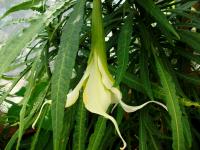
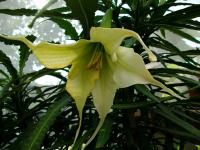
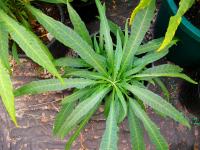
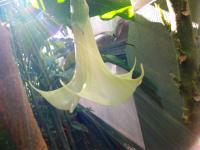
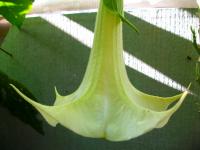

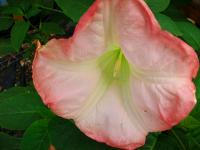
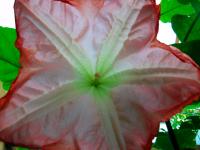
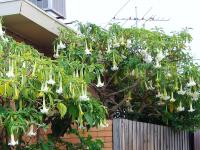

some brugs
in Ethnobotany
Posted
Yes!! please post some photos. I'm getting excited just hearing about it hehe.
Post 'em in this thread... or wherever.